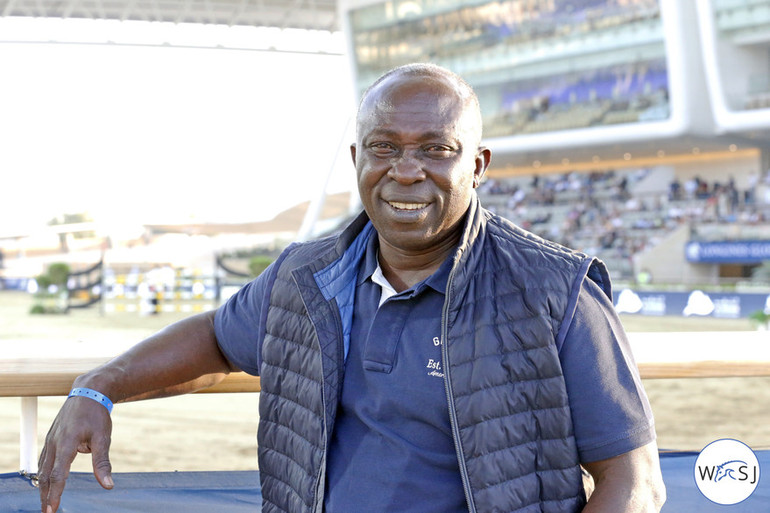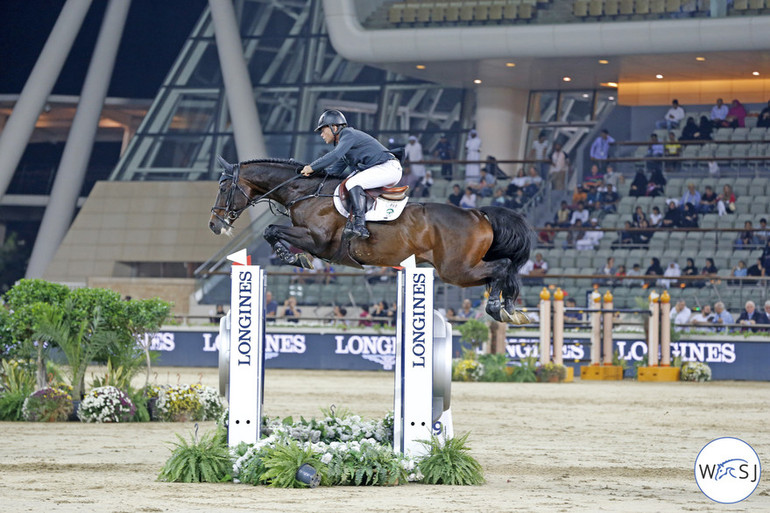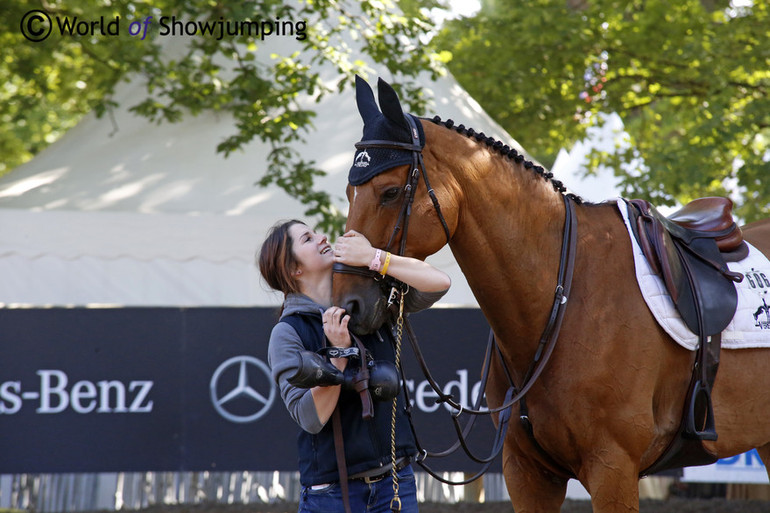George Oduro is an osteopath taking care of the jumping world’s four-legged super stars, and he played a big part on the teams from as many as 15 nations during the Olympic Games in Rio de Janeiro. You will likely meet George at most 5* shows around the world, and in between the shows he spends his time driving from one top jumping stable to the other to take care of the horses for the coming shows.
During the 35 years that George has been treating horses, the type of the horse has changed a lot which also, in George opinion, forces riders, owners and grooms to change. “With today’s breeding we get horses with a lot of blood, which makes them fast with the ability to turn quickly. Many are also very scopey. This forces us to be very careful with there bodies. Earlier we had horses with bodies like elephants, and now they are like cotton. They are very soft and very smooth, and their ligaments and tendons are really weak. Back in the days you could jump a Grand Prix with a 6-year-old, and now you can’t even use the horses for Grand Prix competitions when they are 9. Their bodies aren’t developed for the biggest classes at an early age, and you need to take your time with them,” George tells us.
According to George the biggest reason to horses sustaining injuries, are that they have to do too much too early – the ligaments and the tendons aren’t ready even though their heads might be. “The riders know about this, but it is not always so easy with the owners. They want the horses to achieve quickly. If the horses get the time they need there is a better chance for bigger achievements over a longer period of time. It takes a long time to bring a horse up to Grand Prix level, and if you think there is a short cut the horse will be finished before it really has started to jump.”
George mentions both Casall Ask and Taloubet Z as good examples on how riders should take their time to develop their horses. “Casall Ask really got his time as a youngster. Not even when he was 10, were we sure that he was ready to do Grand Prix classes. Back then he was jumping at shows to get experience, and at the age of 12 he was like Rambo. And since then he has just got better and better – he got the time he needed to get strong and to develop. And Taloubet Z is 16 now and just look how he is moving today, that is fantastic.”
“The only thing I ever wanted to be was an osteopath,” George says when asked about how it all began. “That was and is my life. Already as a child the only thing I wanted to do was to help horses and other animals.
So what does an osteopath do? “First of all, we need to know exactly how the horses’ bodies are working and how the body is connected. Knowing the body of the horse, and treating issues in time we can try to prevent fetlock problems, back problems and so on that can follow from other untreated problems. I want the horses’ bodies to be able to perform what the riders ask from them, and our job is to find out what part of their bodies that doesn’t really function to avoid getting a problem so big that the horses show it. As an osteopath, you work a lot with the nerves, ligaments and tendons on the horses. Trying to get a lot of oxygen into the horses’ bodies to avoid injuries is important. If the horse is really tense in the muscles, there is no oxygen flow which often leads to injuries,” George explains.
To become an osteopath, George first needed to complete the veterinarian studies. “In many countries you can study just to become an osteopath or chiropractor, but in England you first need to become a veterinarian,” George explains.
When George is looking at a horse for the first time, the thing he does before anything else is to watch the horse move – everything from how it goes out of the box to how it is moving in walk and trot. “As an osteopath you need to have a good eye, as well as a lot of feeling in your hands and fingers so that you can feel how the horses react to your touch,” George says.
According to George, the most common problems for showjumpers are their psycromes (where the hips connect), their hocks and their necks. “If you have horses with problems in either of these body parts, and you don’t treat them in time – you will most likely get some kind of issues with the tendons.”
In the 35 years George has been doing this, he has been treating almost 50 000 horses and he knows them all: “I know all the horses that I ever touched, I have it in my head and in my fingers. And it is amazing to meet all these horses. Some horses are easier and some more difficult. Some are really anxious and they don’t allow you to touch them straight away. They are in pain, and they know it will hurt when you touch them. Then I will spend 5-10 minutes where I just speak with the horses, until they let me work with them. As an osteopath, you do a lot of the job from behind the horses and in all these years I never had a horse that kicked. Sometimes I have a mare or a stallion that needs time, but all horses are nice.”
All horses are different, George explains. There are horses that are so hard and that never show a thing, and these horses need extra care and attention. “Rolf-Göran Bengtsson’s Quintero La Silla was one of those horses, as is Edwina Tops-Alexander’s Lintea Tequila. Hello Sanctos and Nino des Buissonnets are the same. You need to watch these horses constantly, and react to the smallest change. Then there are horses that show it all – you just need to get a glimpse from a distance and you know exactly what the issue is.”
Within this picture, George praises the grooms that he has a great respect for and really like working with. “They are so dedicated to their jobs and can tell me straight away if one of their horses has an issue. They cannot repair it or treat it, but they have a special feeling for when something is wrong. If a groom tells me the horse has an issue, I don’t ask about it, I check it straight away and they are always right. Most of the grooms are really fantastic, and know their horses inside and out.”
George is heading to an age where most people would like to slow down a bit, but with no one really there to take over his job it looks like he will have to continue for quite a while: “I’m teaching a bit, and to be honest most of the students are kind of lazy. They want to do what I do, but only work 8-17 five days a week. That is not possible. When at shows, I mostly start at 6 o’clock in the morning to go through the horses and then I watch them warm-up and compete during the day. After the last class I check them again so it can be until midnight or later before I’m done depending on when the last class ends. You really need to be dedicated to your job to take care of the world class jumpers.”
Text © World of Showjumping by Jenny Abrahamsson // Pictures © Jenny Abrahamsson (No reproduction without permission)











